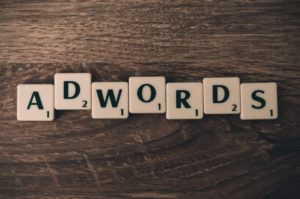 In Google AdWords reports, the conversion is attributed to the last click. AdWords conversion tracking is unique as it will tell us what the keyword was that triggered the first click, as well as the one that triggered the last click. You can check conversions by using the “Reports” and “Tools” tab in search links. Of course, this feature does not apply to all display networks.
In Google AdWords reports, the conversion is attributed to the last click. AdWords conversion tracking is unique as it will tell us what the keyword was that triggered the first click, as well as the one that triggered the last click. You can check conversions by using the “Reports” and “Tools” tab in search links. Of course, this feature does not apply to all display networks.
The indications given are relatively easy to understand.
Last Click Attributed Conversion: The number of last clicks that resulted in a conversion.
Click Assisted Conversion : The number of clicks that resulted in conversion but are not last clicks.
Impression Assisted Conversion: The number of impressions that allowed conversion but did not click on the ad.
Let’s take an example; We are AdWords advertisers and promote a hotel in the US region. A user enters this search in Google: “hotels in the US” and clicks on one of our ads. As it should, a click will be recorded on our Google AdWords account. A week later, we capture the request “US hotels” and see another of our ads but without clicking on it. There, an impression will be recorded on our Google AdWords account.
Finally, a few days pass, and the same user makes a third request: “15th Street hotel”. They click on one of our ads and fill out a booking form. An important detail: the form is linked to a conversion goal defined in Google AdWords (or Google Analytics).
In Google AdWords conversion tracking reports, this process will be counted this way:
Click Assisted Conversion: ” hotel in the US ”
Impression Assisted Conversion: “US hotels”
Last Click Attributed Conversion: “15th Street hotel.”
In short, we will weigh the value of each of our keywords (or campaign or ad group) according to their role within the conversion process. And, in fact, we will be able to better measure the role of a campaign, an ad group, or a keyword according to their influence on the conversion process. This is reminiscent of the idea behind value indices as they are visible when in Google Analytics, we open the most-viewed pages or page-by-title reports. A keyword that does not convert directly can still play a dominant (albeit indirect) role in some conversions.
The reports are interpreted in this way (find them under the “Search attribution” link in the “Measurement” section of the “Tools” dropdown in Google Ads):
Top conversions: Our different conversions sorted by number and/or value.
Assisted impressions and clicks: The respective roles of campaigns, ad groups, and keywords in recent clicks or assisted impressions.
Assisted conversions (per click or impression): The respective roles of campaigns, ad groups, and keywords in assisted conversions.
First click analysis: The respective roles of campaigns, ad groups, and keywords in the first clicks.
Last click analysis: The respective roles of campaigns, ad groups, and keywords in the latest clicks.
Top Paths: Paths (campaigns, ad groups, and keywords) used by users. Let’s use the Scope drop-down list to display the different paths by scan level or transition paths (by click and print).
Time lag: The amount of time elapsed since the first impression, the first click, or the last click. We can rank the data based on the number of conversions or values assigned to conversions.
Path Length: The number of clicks or impressions before a conversion took place.
In the same way as before, we can classify the data according to the number of conversions and/or the values attributed to the conversions.
These new features highlight the perfect complementary relationship between organic SEO and referencing sponsored links. Conversion is part of a broader process of persuasion: in order to obtain the trust of our prospects, we must be present everywhere, in a continuous way and, preferably, in the first positions.
Click campaigns are also campaigns of “notoriety.” It is also one of the explanations of the excellent performance of keywords of notoriety, but it is these types of searches that require us to place a “value” KPI on search terms that start a sales / lead funnel instead of the ones that may ultimately result in a conversion. As an example, a surfer has first entered a generic request to note the name of a company’s establishment. The next time he enters a search environment, he uses the same name in a request of notoriety, and in this order to engage with us, the company. In short, the generic query has started a two-step (or longer) persuasion process while that of notoriety has caused the conversion. So, it’s important that we place a value with the initial search term because without it the conversion “may” have never even came to be.
Finally, this report must be checked before any hasty removal of targeting keywords. A keyword that is insignificant or not “convertible” will prove indispensable for future conversions. And if we do not pay attention, it can result in drastic cuts in our turnover. It’s important to look at a broad time span when reviewing these reports in order to make sure that we get a closer look at the big picture instead of making decisions based on trending data over a shorter period of time.
Google AdWords gives you a lot of control to allow you to display your ads only when they are most relevant and have a greater conversion potential. However, it takes a good level of experience to be able to use this reporting tool in order to get the maximum result from any given campaign. Proceed with caution when grading these terms using this reporting tool.
Use demographic targeting
 It is possible to target people by age, gender, or parental status; not only on the content network but on the search network as well. Depending on your product or service, this potentially allows you to target your potential buyers better. The main idea behind this type of optimization is not to completely cut some demographic profiles, but to use the bid adjustment to pay as little as possible to get the most impact. This technique is particularly useful when one of its demographic factors has a major impact on the conversion rate. For example, only 31% of people searching for mobile video games are men between 18 to 34 years old. It is important to understand that a considerable proportion of buyers in some niches are not the user of the product itself, but rather are buying the product for the end user.
It is possible to target people by age, gender, or parental status; not only on the content network but on the search network as well. Depending on your product or service, this potentially allows you to target your potential buyers better. The main idea behind this type of optimization is not to completely cut some demographic profiles, but to use the bid adjustment to pay as little as possible to get the most impact. This technique is particularly useful when one of its demographic factors has a major impact on the conversion rate. For example, only 31% of people searching for mobile video games are men between 18 to 34 years old. It is important to understand that a considerable proportion of buyers in some niches are not the user of the product itself, but rather are buying the product for the end user.
Define precise targets
This sounds obvious, but there is nothing worse than trying to optimize a Google Ads campaign without having a specific goal in mind. Also, keep in mind that normally, the goal of a campaign is to maximize profit and not to achieve a secondary goal such as to reduce the CPA (cost per acquisition), increase the CTR (click rate), or reduce the CPC (cost per click). This data is often secondary metrics for achieving the goal of maximizing campaign profits. It should also be remembered that this data normally influences communicating vessels, so we must aim for the ideal balance between its targets. There is no point in reducing the cost per click by 50% if it reduces the total number of conversions by 90%.
In Closing
 The main objective of this article is to educate. I wanted to educate people on the usefulness of Click Assisted and Impression Assisted Conversions so that they don’t blindly throw away keyword terms that do essentially play a big role in generating conversions for your account or campaign(s). So many people, for some reason, avoid using the reporting tools that Google Ads has given us. My advice is to try and utilize them to the best of your abilities. If there is a KPI that is used there that you are not familiar with… well then, familiarize yourself with it. It’s there for a reason. I hope you all have found this article helpful and educational. Thank You!
The main objective of this article is to educate. I wanted to educate people on the usefulness of Click Assisted and Impression Assisted Conversions so that they don’t blindly throw away keyword terms that do essentially play a big role in generating conversions for your account or campaign(s). So many people, for some reason, avoid using the reporting tools that Google Ads has given us. My advice is to try and utilize them to the best of your abilities. If there is a KPI that is used there that you are not familiar with… well then, familiarize yourself with it. It’s there for a reason. I hope you all have found this article helpful and educational. Thank You!






























